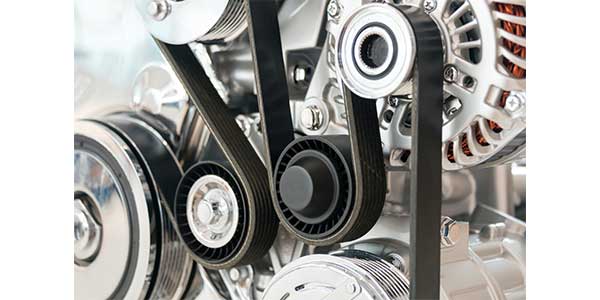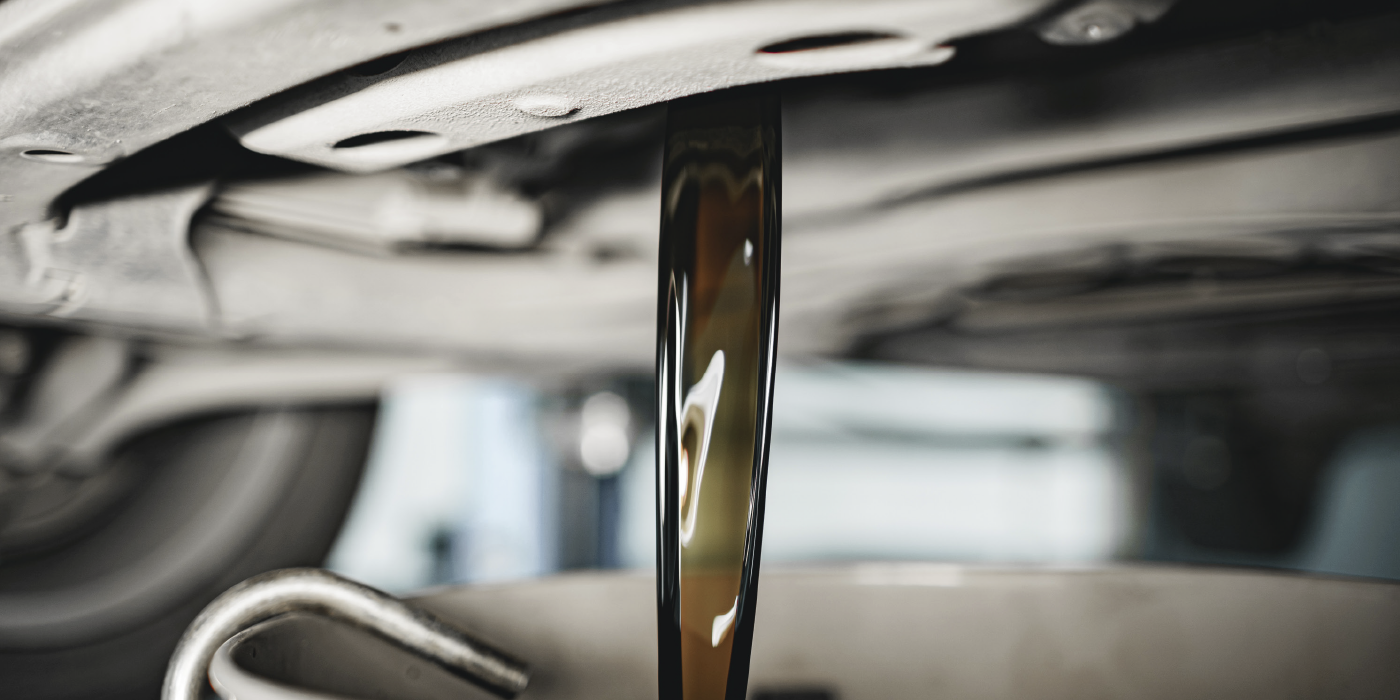
Most late-model engines have serpentine belt drives for the engine-driven accessories. And, most people know that belts are a maintenance item and eventually have to be replaced. However, many don’t know the spring-loaded automatic tensioner that keeps a serpentine belt tight is also a wear item. Consequently, the automatic tensioner may also have to be replaced when the time comes to change the belt.
The automatic tensioner has a coil spring inside that applies just the right amount of force against the belt to keep it tight. The tensioner also provides a little “give” so it can absorb and cushion shock loads on the belt that occur when the A/C compressor clutch cycles on and off. What’s more, the tensioner automatically compensates for wear and keeps the belt under constant tension. But nothing lasts forever, not belts and not automatic tensioners. The typical service life of a serpentine belt is about 60,000 miles or five years. When the belt nears the end of its life, it may become cracked, glazed and noisy.
If an aging belt is not replaced, it may break, causing a loss of drive torque to all of the engine’s accessories. When the water pump stops turning, the flow of coolant stops and the engine begins to overheat. When the alternator stops turning, there is no charging output and the battery starts to run down. When the power steering pump stops turning, the steering suddenly gets very stiff and hard to control.
All too often, an old serpentine belt (or a broken belt) will be replaced with a new one. But the automatic tensioner is not inspected to make sure it is still working properly and is in good condition. This mistake can lead to rapid belt wear and repeat belt failures if the tensioner is weak or worn out.
Belt tension is critical. Too little tension may allow the belt to slip and squeal. Slippage also causes the belt to run hot and age prematurely. And if the belt is really loose, it may come off its pulleys. Too much tension on a belt may overload it as well as the shaft bearings on the water pump, alternator, power steering pump and air conditioning compressor, possibly leading to premature failures in these components.
The tensioner is often overlooked when a belt is replaced. Even so, the tensioner should always be inspected when changing a belt because:
• Rust or corrosion can jam the tensioner housing and prevent it from rotating freely. A frozen tensioner cannot maintain proper belt tension. Corrosion is usually a result of road splash, especially in areas where roads are heavily salted during the winter.
• Dirt or mud can also jam the tensioner housing.
• A loose or worn pivot arm can allow unwanted movement that results in belt noise and misalignment. Over time, this will increase belt wear and lead to premature belt failure.
• A worn bushing in the tensioner pulley can cause vibrations and noise. If the bushing seizes, it may cause the belt to snap.
• A weak spring can’t maintain proper tension and the belt will slip. Springs lose tension over time from exposure to heat.
• Cracks or damage to the tensioner housing or pulley arm may prevent it from rotating smoothly and maintaining proper belt tension.
SYMPTOMS
Symptoms that typically indicate an automatic tensioner has reached the end of the road include:
• Belt slipping (due to loss of tension).
• Belt glazing (caused by slipping).
• Excessive movement or rocking of the tensioner pulley or “belt flutter” when the engine is running. This means the spring inside the tensioner is weak and/or the bushing is worn. The tensioner needs to be replaced.
• Wobble in the tensioner pulley (or idler pulley). Wobble means the bearings are shot.
• Belt or tensioner noise. The tensioner should be quiet when the engine is running. Any squealing, rumbling, growling or chirping noises should be investigated to determine the cause. A mechanic’s stethoscope can be used to pinpoint the source of the noise. The probe should be placed against the bolt in the center of the tensioner pulley wheel to listen for bearing noise. The idler pulley(s) should also be checked because the bearings in this component can wear out, too. The same goes for all the engine-driven accessories (water pump, alternator, PS pump and A/C compressor).
• Pulley damage. Physical damage of any kind on the automatic tensioner pulley may indicate excessive tension or physical interference. If the pulley is damaged, replace the tensioner assembly, not just the pulley. If an idler pulley is damaged, also inspect the tensioner because vibrations caused by a bad idler pulley may damage the tensioner.
TENSIONER CHECKS
Check the movement of the tensioner arm with the engine off. Use a socket with a long handle ratchet or breaker bar on the tensioner pulley center bolt to rotate the tensioner. There are no specifications for measuring the amount of resistance offered by the tensioner spring, but if the tensioner offers little resistance, it may indicate a weak or broken spring. If it fails to move at all, the tensioner is jammed and needs to be replaced.
Watch for looseness in the arm when the tensioner is rotated. The arm should not wobble or twist. If it does, the tensioner bearings are worn and the unit needs to be replaced.
Also note the position of the arm on the automatic tensioner. Many units have marks on the housing that show the normal range in which the arm can pivot. If the position of the arm is outside these marks, it indicates a problem (the belt may be too long or too short, or the tensioner may be jammed).
Note the wear pattern on the tensioner and idler pulley(s). Misalignment and bearing wear can cause the belt to track off-center. This will cause the belt to wear quickly. The tensioner and idler pulley bearings can be checked by removing the belt and spinning the pulleys by hand. All pulleys should turn freely with no binding, roughness or wobble. Any binding, roughness or wobble means these parts are bad and need to be replaced.
Pulley alignment should also be checked to make sure there isn’t a mounting problem in the belt drive system. Pulley alignment can be checked by placing a straight edge against the pulleys, or with a special laser alignment tool designed for this purpose.
REPLACEMENT TIPS
If the automatic belt tensioner has failed (and the engine has a lot of miles on it), it’s probably a good idea to replace the idler pulley(s) at the same time. Why? Because the shaft bearings on all the pulleys will have the same amount of wear. If they are reaching the end of their service life, replacing them now will restore the pulleys to like-new condition and reduce the risk of a breakdown because of a belt or pulley failure.
Aftermarket automatic tensioners are often a better replacement choice than an original equipment tensioner, especially on older vehicle applications. Rather than copy OEM tensioner designs with their inherent flaws, some aftermarket manufacturers have re-engineered their parts to overcome the weaknesses of the original design. As a result, some aftermarket replacement tensioners may not look the same as the original. But there’s a reason for this — these parts have been redesigned to outperform and outlast the original parts they replace.













